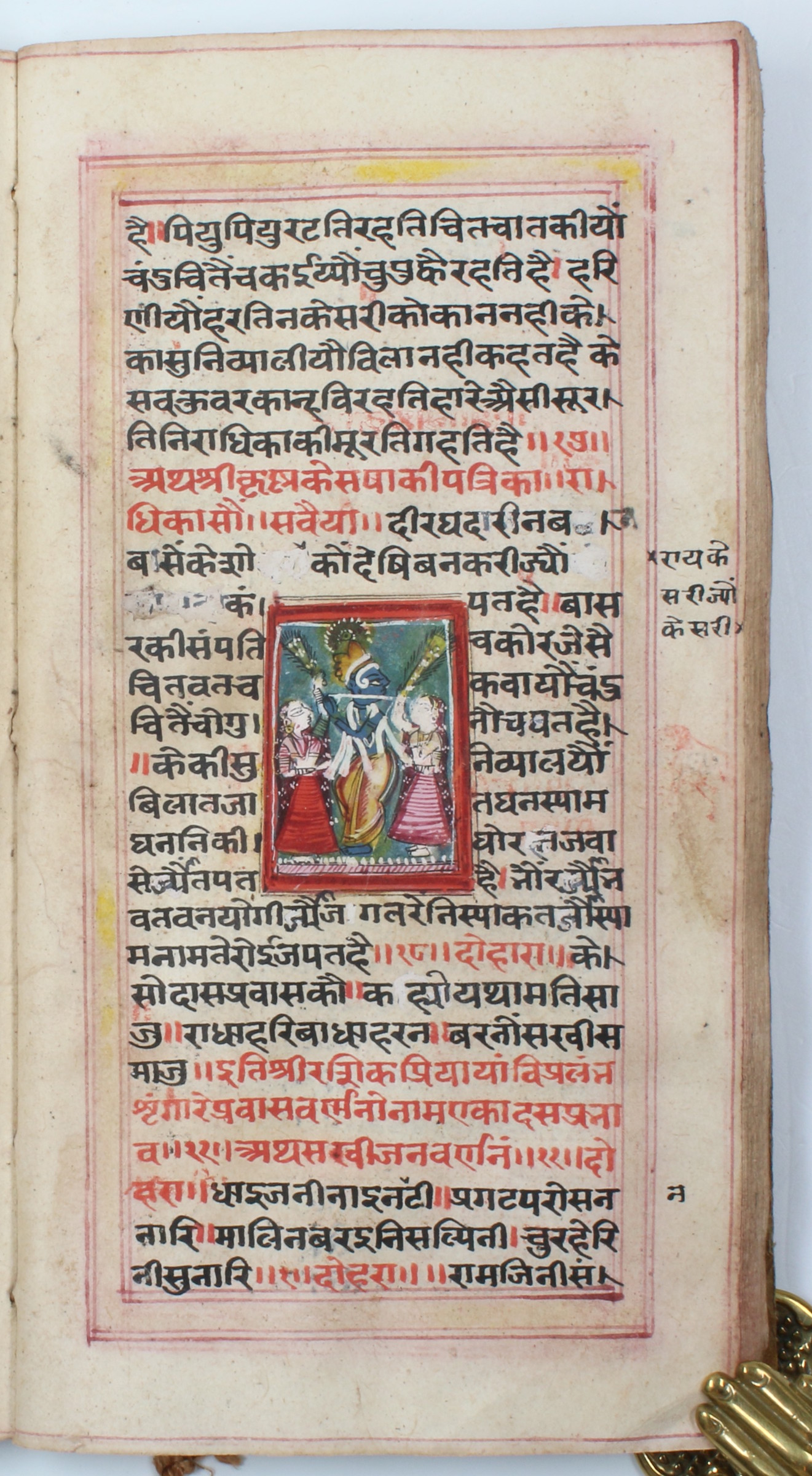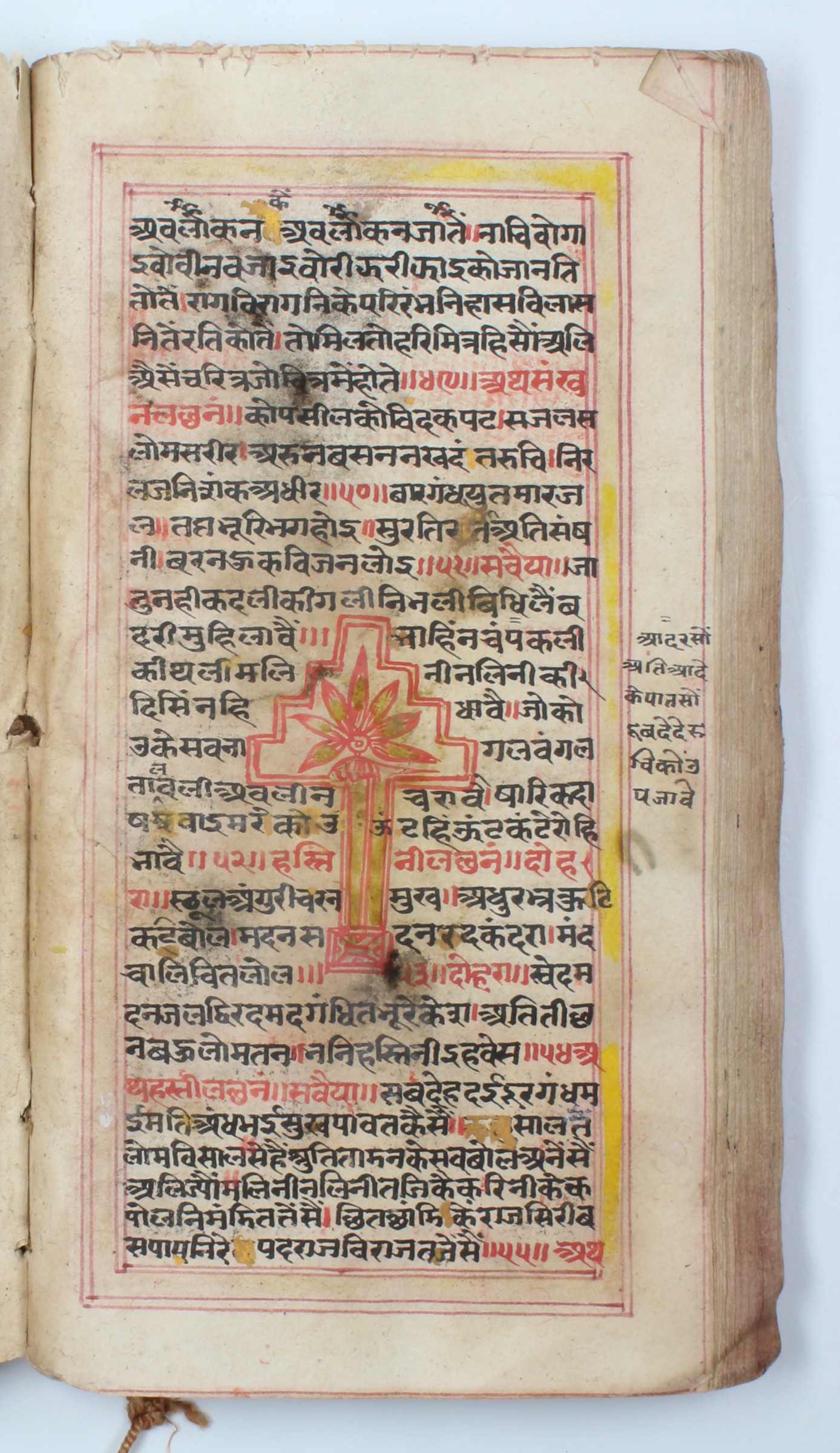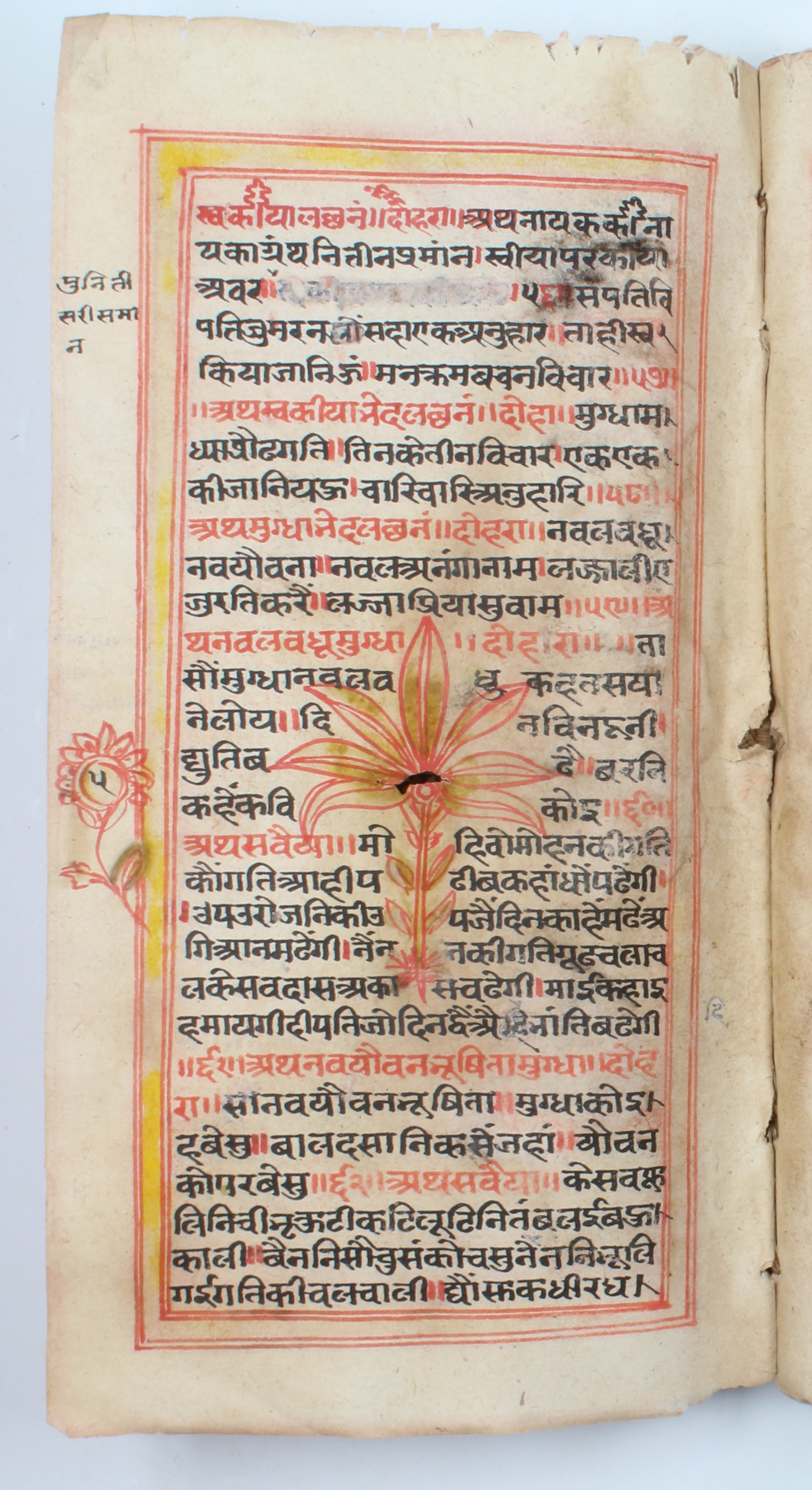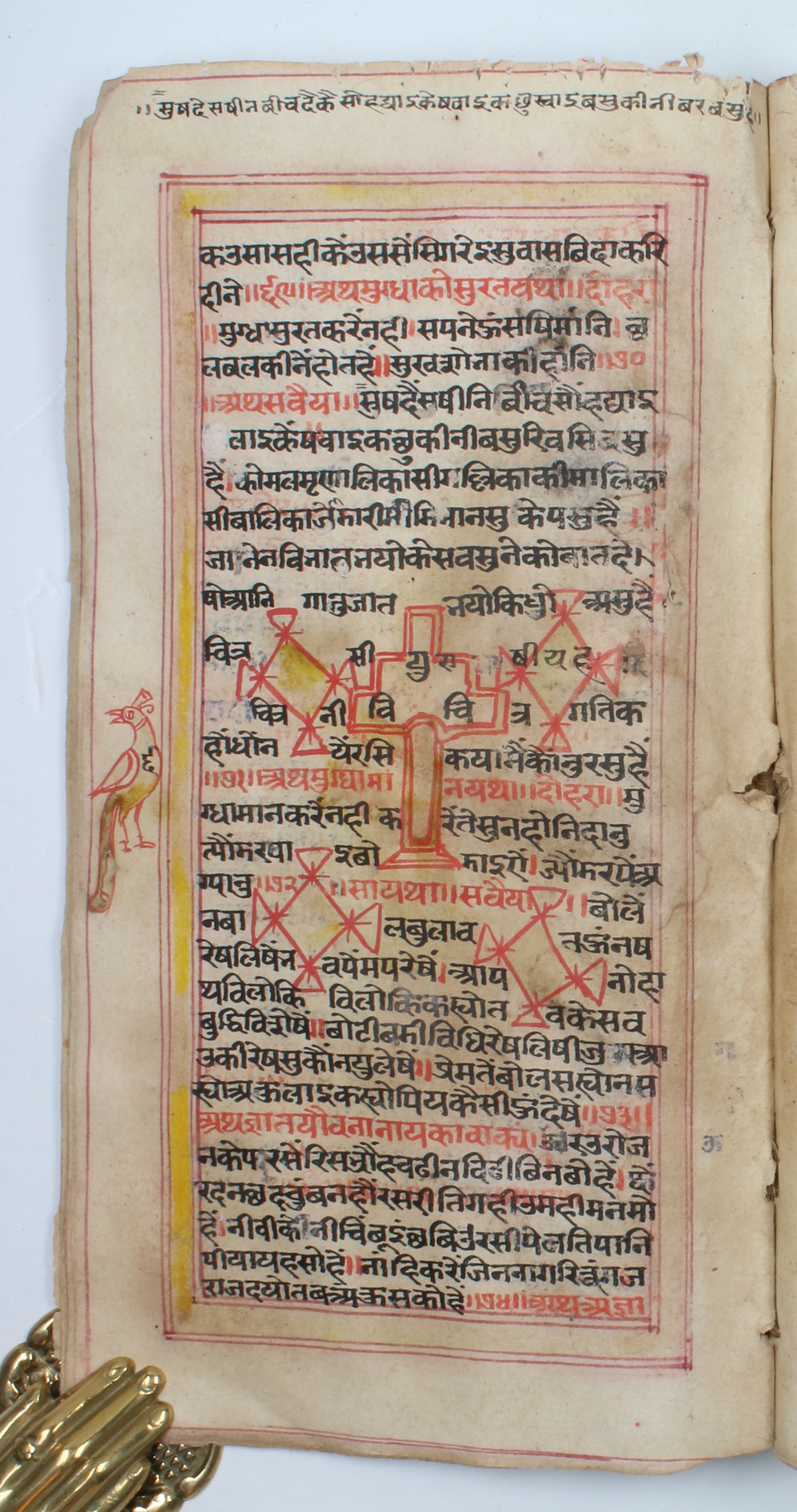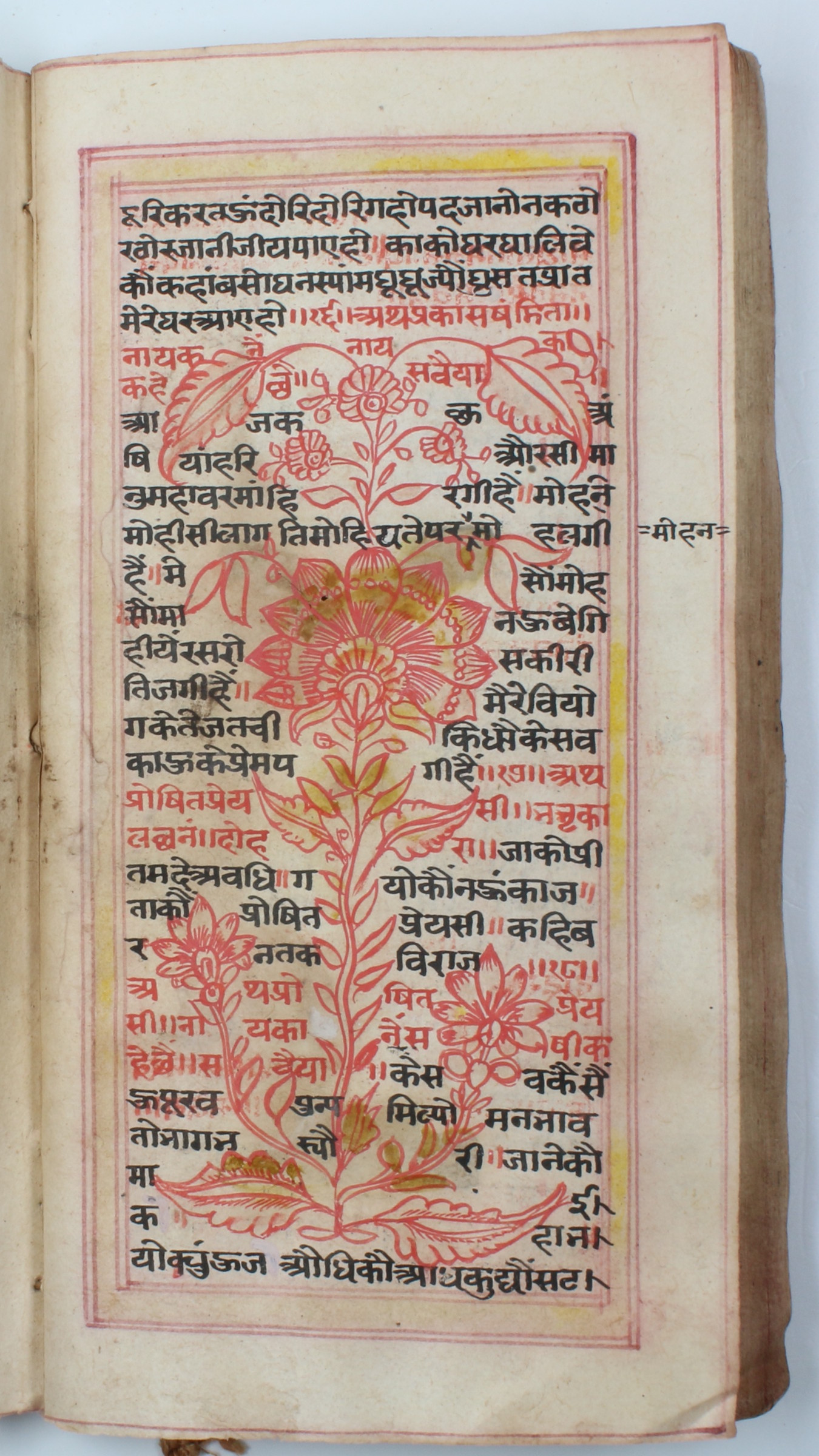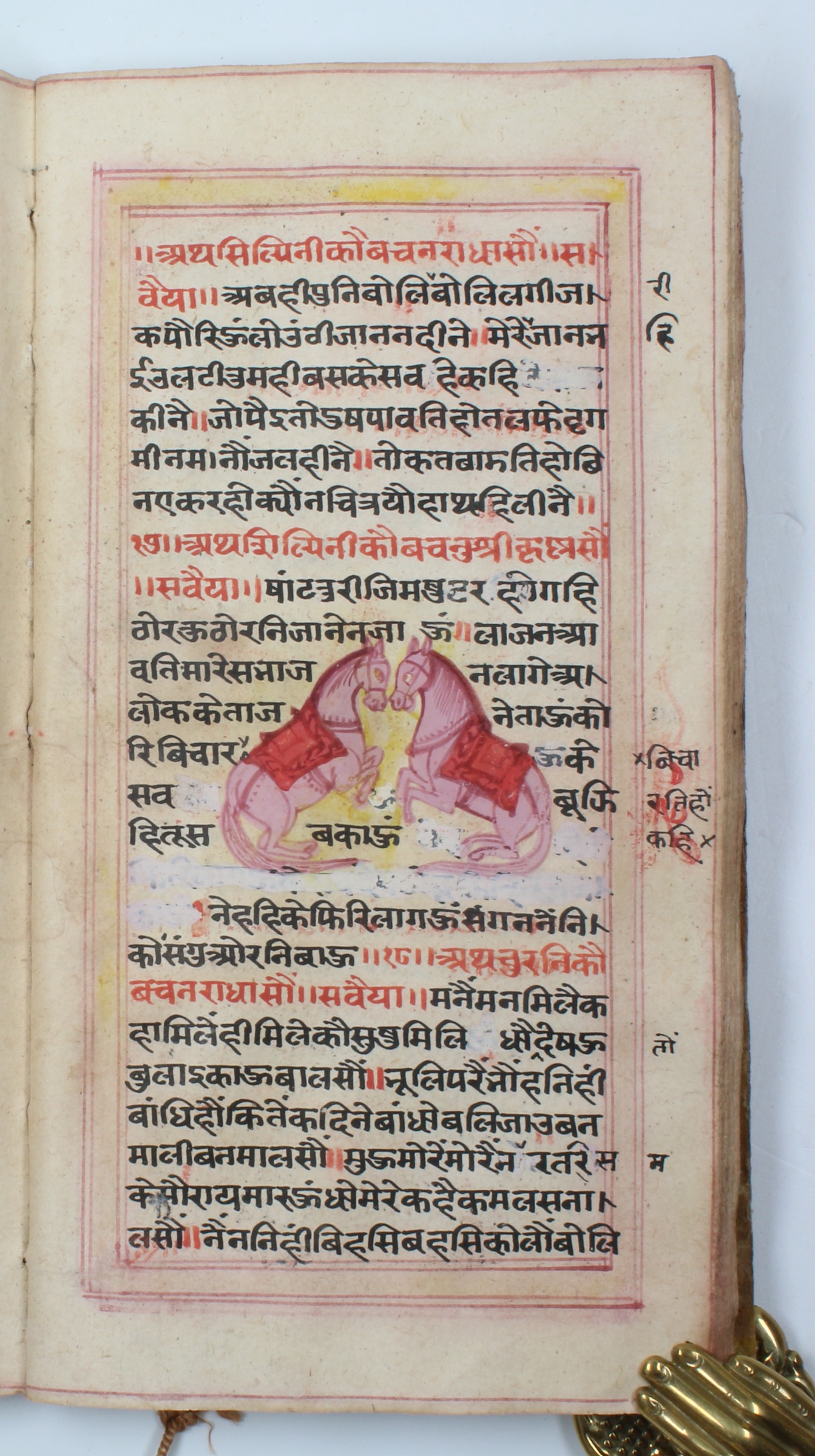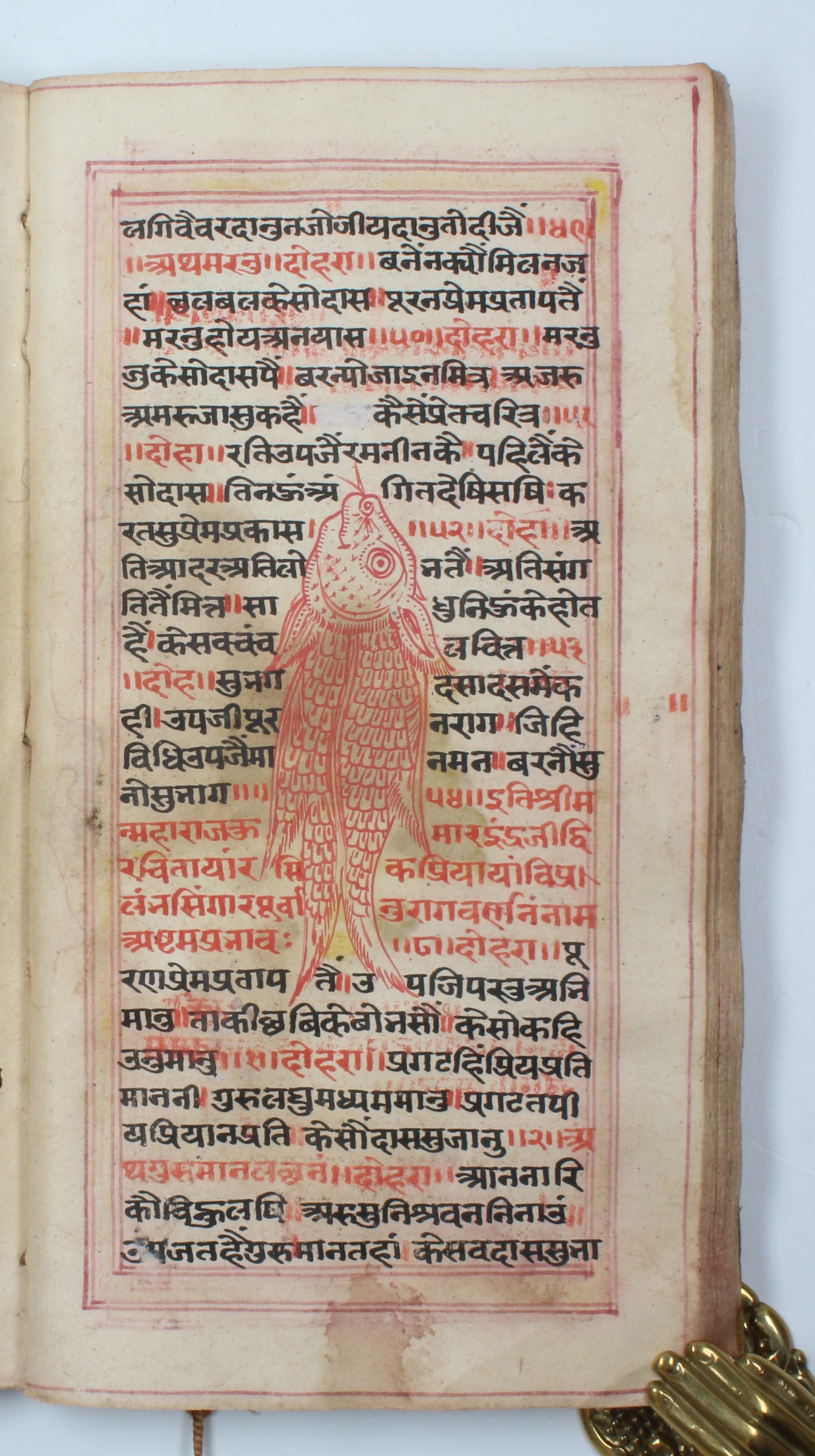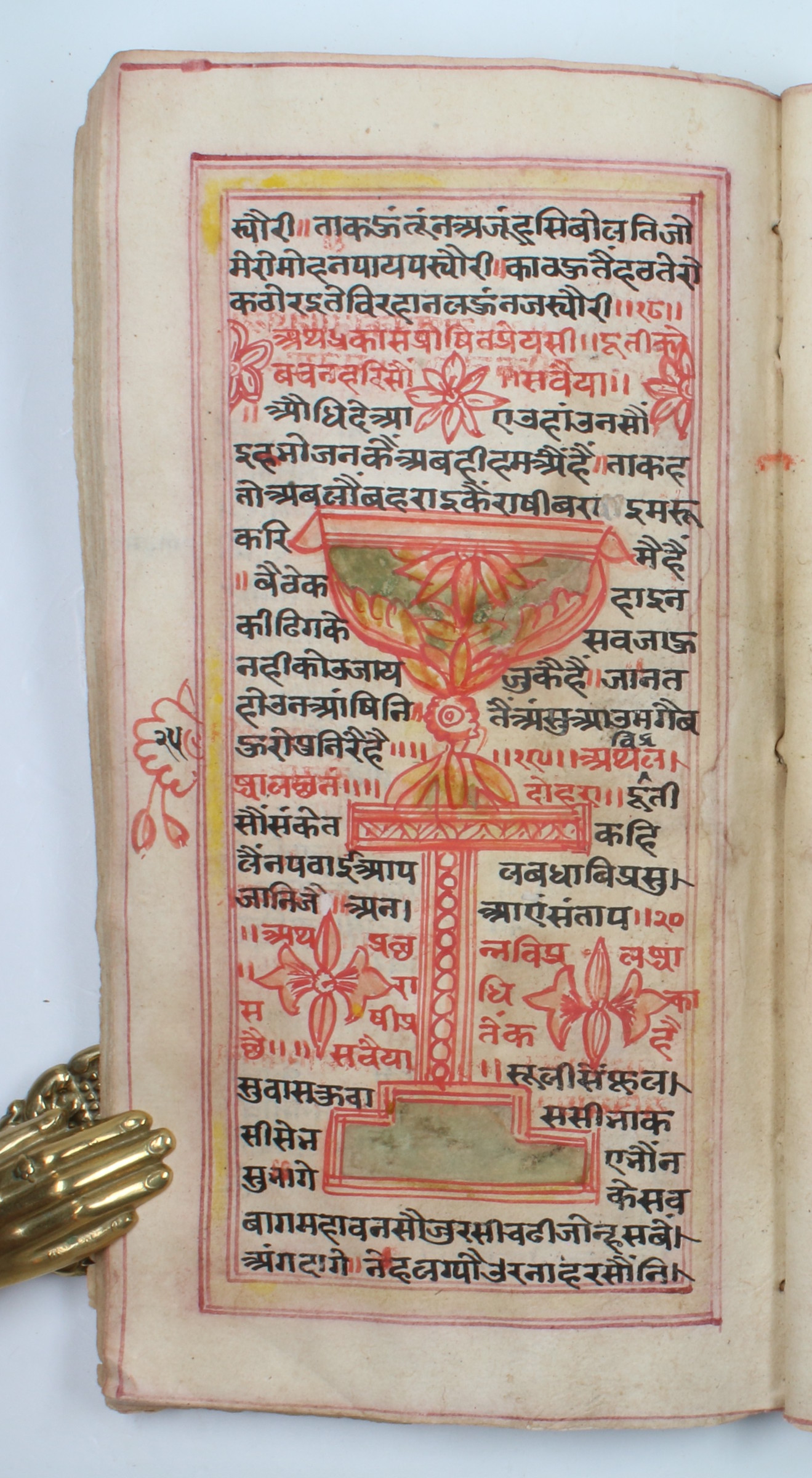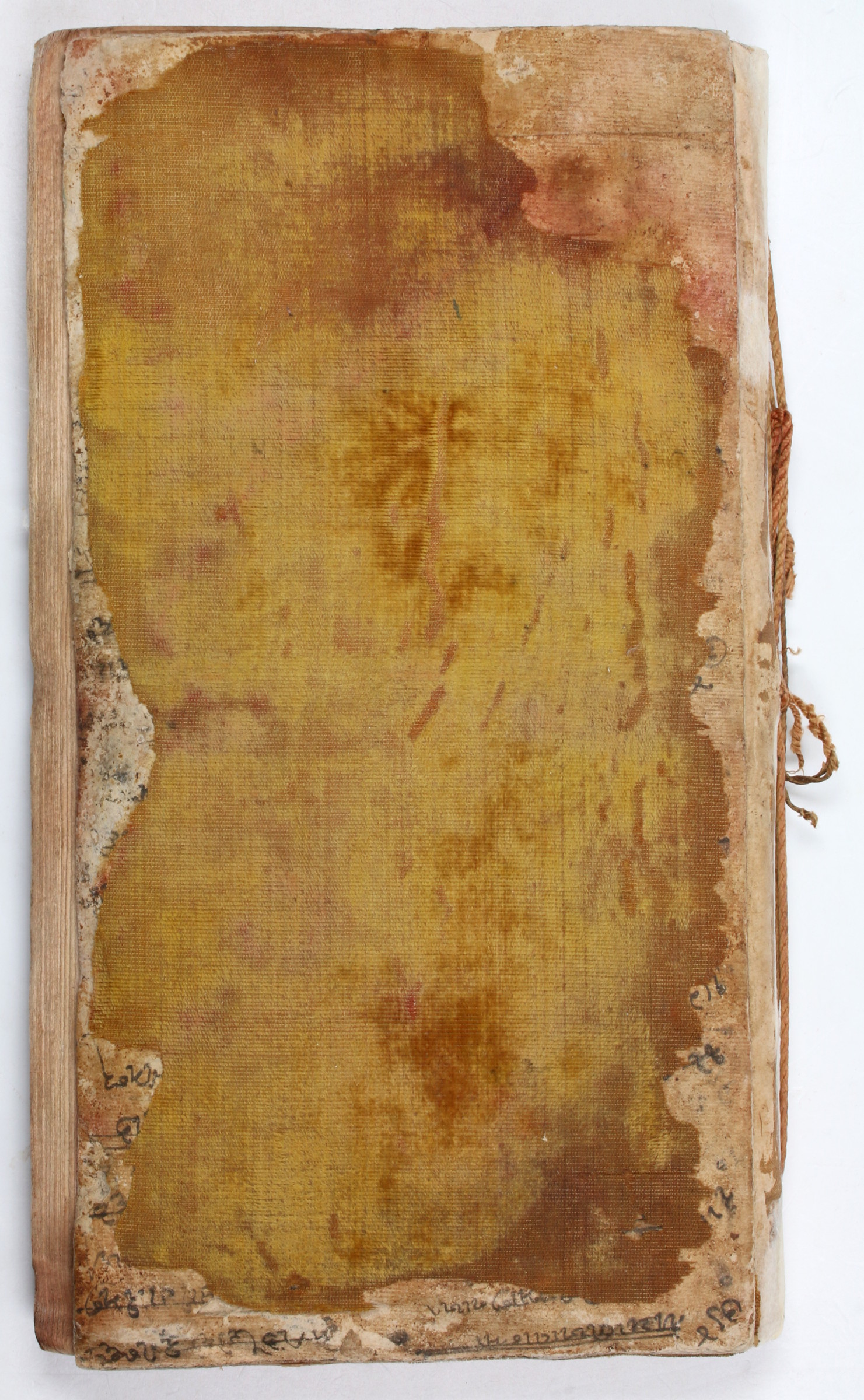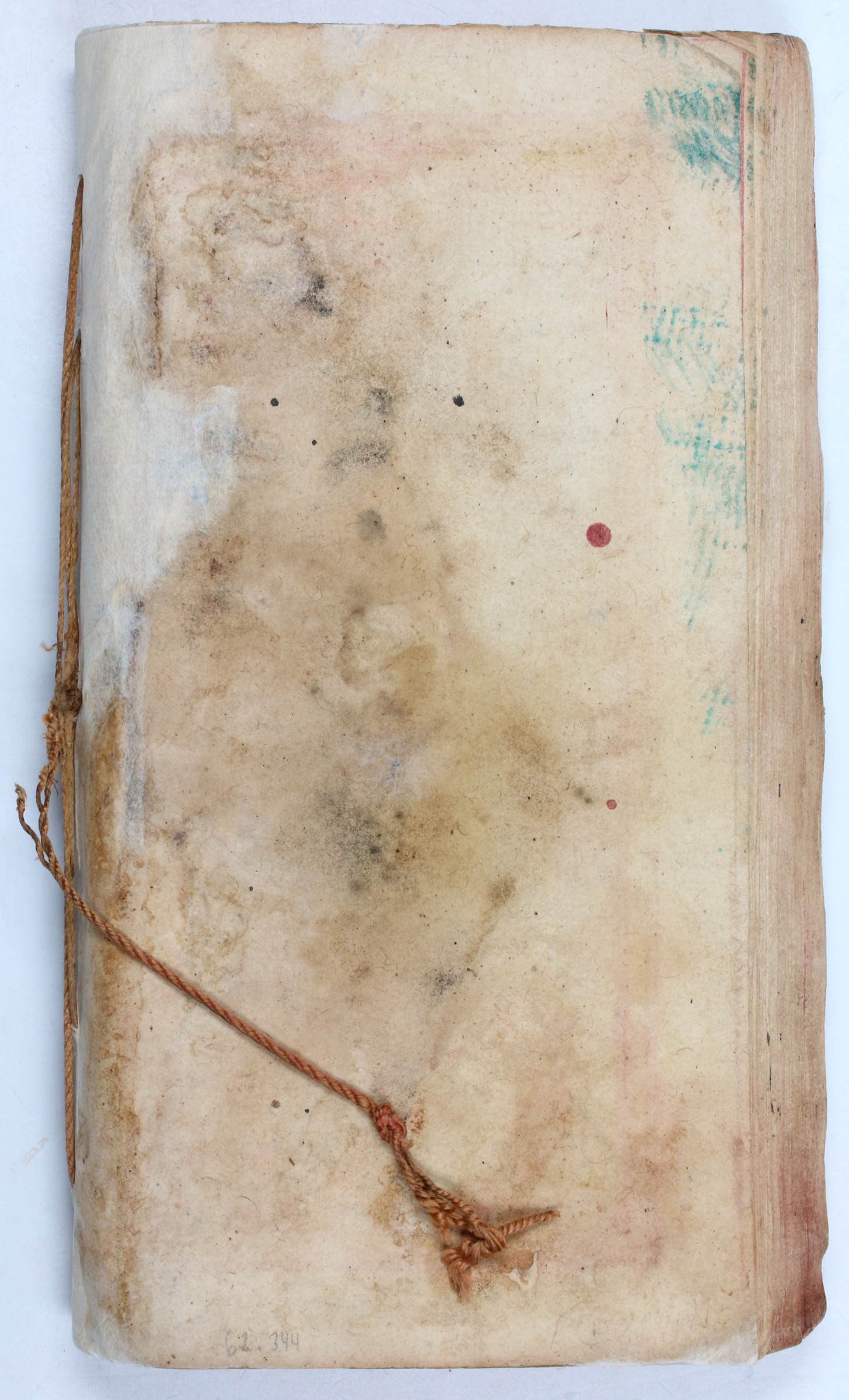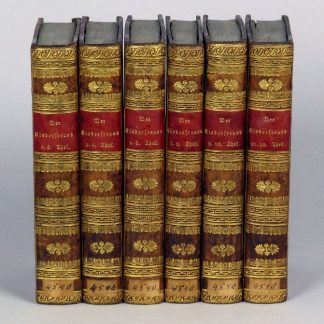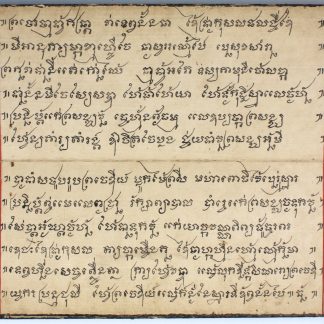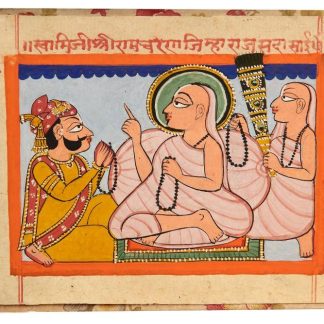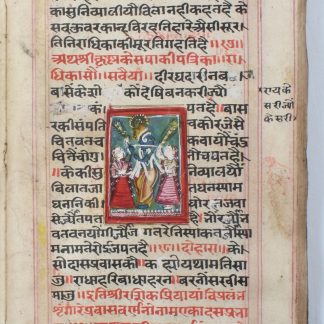Continuing the manuscript tradition of Indian classical music
Gita Govinda [and others].
Tall 8vo (164 x 279 mm). 126 ff. (of ??). Sanskrit manuscript on paper. Black and red ink in 28 lines, ruled in red and yellow. With in-text hand-painted illustrations in red, yellow and blue, including peacocks, fish, tigers, and human figures, and one painted miniature set within text. One silk-covered board.
€ 9,500.00
A lovely illustrated compilation of Sanskrit poetry and music, featuring selections from the ragam Rasikapriya and from Gita Govinda. The latter, Gita Govinda, is the most famous work attributed to the Sanskrit poet Jayedeva (b. ca. 1170), active in East India in the 12th century and a near-mythical figure in his own right. Gita Govinda's influence can still be seen in the compositions and dances of Odissi music, the genre of classical music which hails from the Indian state of Odisha. Jayedeva's many works garnered numerous commentaries - many devoted to Gita Govinda - and commanded a long-standing respect and popularity across the subcontinent. Two of Jayedeva's works are even included in Sikh holy texts, a testament to his spiritual and cultural importance.
The music of both Gita Govinda and Rasikapriya is that of Indian classical music, itself an ancient tradition with a remarkable written record. Gita Govinda is associated with East Indian music (Odissi in particular, as mentioned above) and Rasikapriya with South Indian music, or Carnatic music. Both form the basis of compositions stretching across Indian history to the present day.
The manuscript's in-text illustrations add an extra dimension to a handsome collection. They feature peacocks, cranes, women, fish, and floral and geometric designs.
Upper board missing, lower silk-covered board worn and chipped. Light dampstaining and ripple to text block, some corrections made in white to text.

